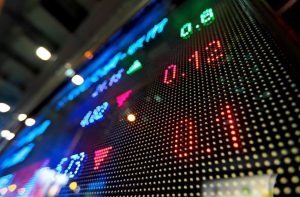Unilever plc ADR (NYSE:UL) finished Wednesday with a subtraction of -$0.51 to close at $48.80, a downside of -1.03 percent. An average of 1,711,740 shares of common stock have been traded in the last five days. There was a fall of -$1.87 in the past week, and it reached a new high 35 times over the past 12 months. The last 20 days have seen an average of 1,550,390 shares traded, while the 50-day average volume stands at 1,754,962.
UL stock has decreased by -4.50% in the last month. The company shares reached their 1-month lowest point of $48.66 on 09/27/23. With the stock rallying to its 52-week high on 04/28/23, shares of the company touched a low of $42.44 and a high of $55.99 in 52 weeks. It has reached a new high 20 times so far this year and lost -3.08% or -$1.55 in price. In spite of this, the price is down -12.84% from the 52-week high.
Valuation Metrics
Unilever plc ADR (UL) has a trailing price-to-earnings (P/E) ratio of 14.51. The stock’s beta is 0.46. Other valuation ratios to consider include the trailing price-to-sales (P/S) ratio at 1.93, the price-to-book (PB) ratio at 5.84, and the price-to-cash flow ratio at 21.05.
The company has a payout ratio of 55.45%. The company’s most recent quarterly dividend payment was $0.4702 a share, representing a up of 2.91% from $0.4569 last year. Its latest increase dividend $0.0133 reported on Tuesday July 4 2023.
Financial Health
The quick ratio of Unilever plc ADR for the recent quarter was 0.57, and the current ratio was 0.79, indicating that the company is not able to meet its debt obligations. Further, the company has a long term debt to equity ratio of 1.25 and a total debt to equity ratio of 1.59 for the recent quarter. Unilever plc ADR’s EBITDA margin is 18.99%, while its operating margin for the same period stands at 16.21%. Its gross profit as reported stood at $51.96 billion compared to revenue of $63.29 billion.
Technical Picture
From a technical analysis perspective, let’s take a brief look at Unilever plc ADR (UL) price momentum. RSI 9-day as of the close on 27 September was 21.24%, suggesting the stock is oversold, with historical volatility in this time frame at 7.90%.
As of today, UL’s price is $49.77 -3.69% or -$1.87 from its 5-day moving average. UL is currently trading -4.89% lower than its 20-day SMA and -11.93% lower than its 100-day SMA. However, the stock’s current price level is -6.69% below the SMA50 and -3.17% below the SMA200.
The stochastic %K and %D were 15.42% and 24.52%, respectively, and the average true range (ATR) was 0.53. With the 14-day stochastic at 4.55% and the average true range at 0.52, the RSI (14) stands at 28.36%. The stock has reached -0.88 on the 9-day MACD Oscillator while the 14-day reading was at -1.01.
Analyst Ratings
Bernstein downgraded Unilever plc ADR (NYSE: UL) to a a Mkt perform rating in its most recent analyst report. Previously, the stock was rated as an Outperform. The consensus rating for Unilever plc ADR (UL) among analysts is Hold. According to current brokerage recommendations, 3 brokerage firms advise that investors sell UL, while 9 suggest investors hold. There are 2 analysts who rate the stock as underweight. The stock is rated overweight by 1 analysts, while 8 others rate it as a “buy”.
What is UL’s price target for the next 12 months?
Analysts predict a range of price targets between $41.18 and $64.63, with a median target of $57.42. Taking a look at these predictions, the average price target given by analysts for Unilever plc ADR (UL) stock is $55.75.







